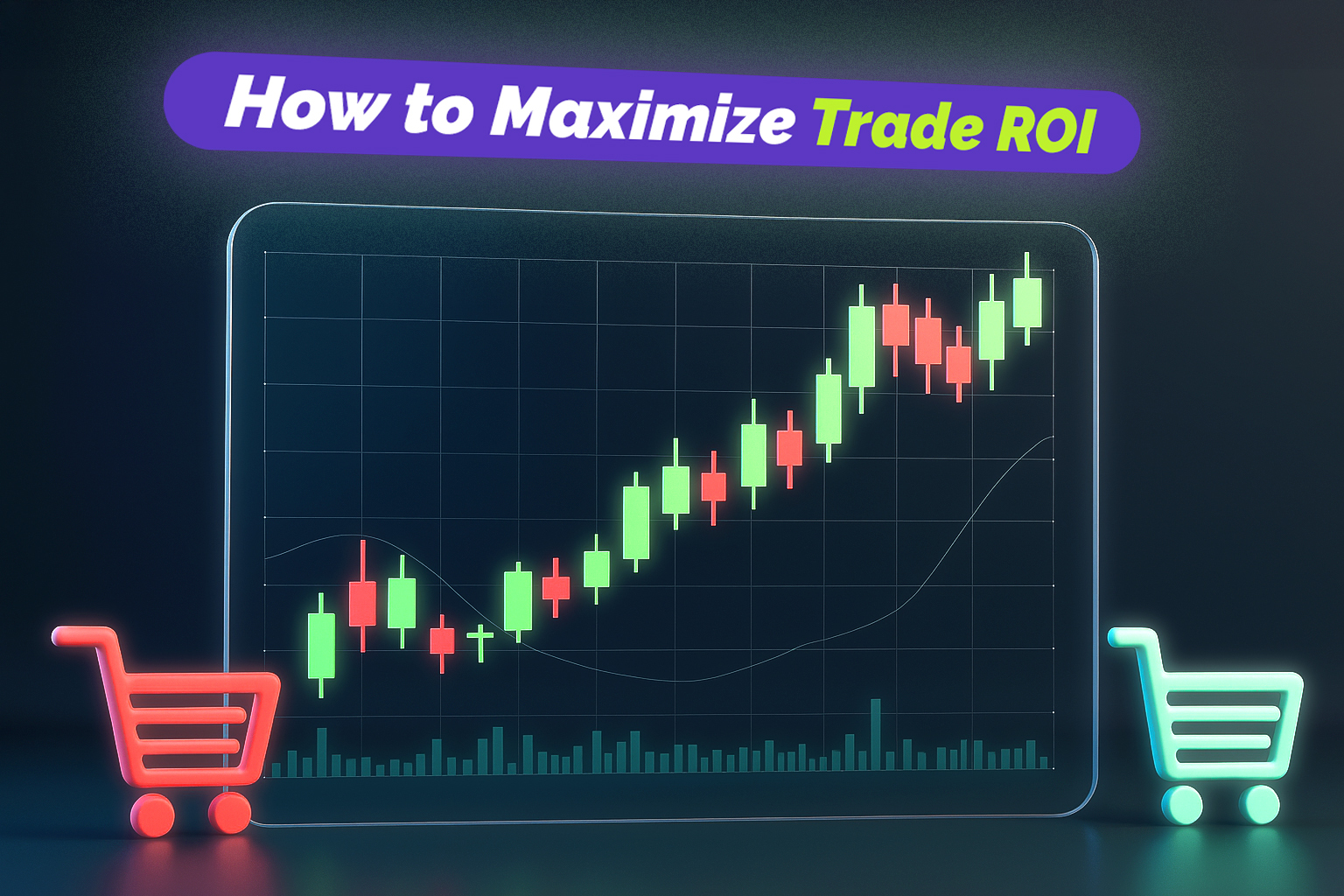How to Allocate Trade Funds for Maximum ROI

In CPG, effective trade fund allocation - the practice of distributing trade spend across different channels and retailers - is essential for a brand's success. How can you ensure you allocate for maximum delivery and ROI?
For many growing brands, trade spend and promotions become a black box: dollars go out, but returns are murky and confusing at best. Without the right systems in place, misallocated budgets, ineffective promotions, and unchecked retail deductions quietly chip away at margins.
Instead of driving growth, trade spend becomes a fire to manage, leaving trade management teams chasing lost dollars instead of scaling their brands with confidence.
So, how can trade marketing managers allocate trade funds effectively while minimizing risk? The answer lies in a smarter, data-driven approach to trade fund allocation—one that maximizes return on investment (ROI), reduces a company's financial waste, and ensures promotions actually drive profitable sales.
In this guide, we’ll break down a few approaches to better trade fund allocation, helping you optimize trade spending, improve forecasting, and avoid the deduction pitfalls that eat into your department and company’s bottom line.
Allocate Trade Funds Based on Business Objectives
Before deciding where and how to allocate your trade dollars, brands must align their trade strategy with their broader business goals. Trade spending should not be reactive to retailer demands or be solely for the purpose of driving revenue without taking the cost side into account. Ideally trade spend is approached as an intentional, thoughtful investment that supports specific business goals around brand growth and profitability.
For example...
-
Are you focused on trial and awareness? Then prioritize promotions that encourage new customer acquisition, such as in-store demos, high-value digital couponing, and introductory TPRs (Temporary Price Reductions).
-
Are you aiming to defend shelf space? Focus on strengthening relationships with key retailers through co-marketing initiatives and strategic promotional agreements.
-
Is your goal to improve margin efficiency? Then invest in promotions with a proven track record of generating incremental sales, rather than ones that simply shift purchases forward without adding value.
Trade Fund Allocation at Different Growth Stages
Emerging CPG Brands
Invest in trial-driving promotions and retailer partnerships that boost brand visibility while managing tight budgets. See how Daily Crunch manages to do just this with their Trade Promotion Management (TPM) platform.
Scaling/Midsize CPG Brands
Move past managing trade promotion to optimizing trade planning by analyzing past promotion performance and eliminating wasteful spending. See how Marukan adjusted their plan using a year’s worth of historical data to significantly increase performance (2-3x) and reduce spending.
Mature CPG Brands
Prioritize high-ROI promotions (you should have plenty of data on this) and leverage customer-level profit & loss reporting to refine the level of trade investment with each individual customer.
See how Lundberg uses their TPM to follow customer-level trade spending and turn their legacy brand into a profitable retail powerhouse.
By defining your company objectives upfront, you ensure that every trade dollar spent is contributing to measurable business growth. Set KPIs with your sales and finance teams to monitor and hold teams accountable as you grow. And if you have a TPM or trade management platform provider that offers continuous advisory services as we do at Promomash, you can also share your KPIs and goals with them to ensure you’re making the best use of the platform to track progress.
Use Data to Prioritize High-Impact Promotions
As your brand grows into the 8–9 figure range, you’ll realize that not all promotions or customers deliver the same value. Allocating trade funds based on what has always been done historically is a recipe for inefficiency, financial loss, and leadership change. The key to effective trade fund allocation is leveraging historical, trusted data sources to identify the highest-impact promotions with real return on investment.
Best Practices for Data-Driven Trade Spend Allocation
-
Analyze your company's historical trade performance. Take a look at past promotions to see what worked and what didn’t. Historical data will tell you a lot about what you should adjust going forward. Was that BOGO (Buy-One-Get-One) that your broker submitted worth the additional volume, or did it just subsidize an existing customer?
-
Compare retailers for profitability and promotional performance. Some customers drive more incremental sales than others. Allocate your trade dollars based on where you see the best return – it will only benefit your retail relationships and velocity performance going forward.
-
Use analytics. Advanced trade promotion management (TPM) tools, like Promomash, allow brands to forecast promotion effectiveness, helping avoid low-ROI investments before they happen.
-
Measure true lift, not just sales spikes. Just because sales increase during a promo period doesn’t mean you gained new customers. Make sure your team is able to track post-promo sales to measure true impact and lift, reduce wasteful spending, and improve their profitability over time.
Allocating Trade Funds on Profitability vs Volume
A common mistake in trade fund allocation is prioritizing top-volume retailers over top-profitability retailers. Just because a retailer moves a lot of your product doesn’t mean they’re driving profit for your brand. In fact, it could be that relationship that ends up harming your business.
Instead, trade spend should be allocated based on customer-level profitability, ensuring that each retailer is contributing positively to your bottom line.
How to Evaluate Customer-Level Profitability
-
Track all promotional costs – Factor in slotting fees, co-op advertising, off-invoice discounts, and any hidden retailer charges and deductions.
-
Measure incremental lift – If a promotion doesn’t generate incremental sales, it’s not worth the investment. Period.
-
Assess deduction history – Some retailers have significantly higher deduction rates than others, cutting into your trade ROI. Review these retail partners and consider trimming the fat if you can’t turn them into a profitable account.
By focusing on profitability over volume, brands can prevent margin erosion and ensure their trade spend is working in their favor.
Adopting Proactive Deduction Management
Retailer deductions are an unavoidable part of CPG, but that doesn’t mean they should be accepted as a “cost of doing business.” Many brands lose thousands—if not millions—of dollars annually due to avoidable, erroneous, or disputable deductions.
Steps to Manage Retailer Deductions Proactively
- Regularly audit retailer deductions against agreed promotional terms.
- Dispute erroneous deductions promptly using documented evidence from TPM platforms.
- Analyze trends to identify recurring deduction issues with particular retailers.
- Negotiate clearly defined promotional terms upfront to minimize ambiguity and disputes.
A proactive deduction management process is critical for protecting trade ROI and ensuring trade fund allocation remains efficient.
Measure and Optimize in Real Time
Trade promotion management shouldn’t be a set-it-and-forget-it process. The most successful brands continuously measure and optimize their trade spend in real time, adjusting allocations, refining strategies, and eliminating underperforming promotions.
Key Trade Promotion KPIs to Track:
-
Incremental Sales Lift – Are promotions driving new sales or just shifting purchases forward?
-
ROI per Promotion – Is the trade spend actually generating a profit?
-
Deduction Rate – How much of your trade budget is lost to retailer chargebacks?
-
Customer-Level Profitability – Are you spending more on some retailers than you’re making in profit?
By integrating a real-time trade management platform, brands will gain instant visibility into trade performance, making it easier to pivot when needed and ultimately increase profitability at an account level.
The Bottom Line: Purpose-Driven Trade Fund Allocation Leads to Higher ROI
CPG brands that master trade fund allocation don’t just spend smarter—they sell smarter, and in turn, they scale faster. By aligning trade investments with business goals, prioritizing high-ROI promotions, and proactively managing deductions, brands can maximize trade profitability while minimizing financial waste.
At Promomash, we're here to help CPG brands optimize their trade spend, streamline deduction management, and ensure every dollar invested in promotions brings a return. If you're ready to take control of your trade ROI, contact us.
